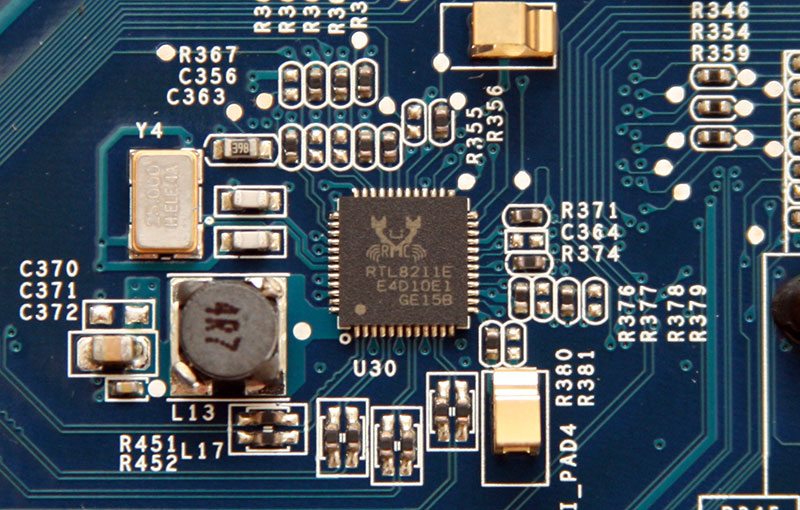Synology DS415Play 4-Bay NAS Review
Chris Hadley / 10 years ago
A Closer Look
As seen on a number of Synology’s units, the DS415Play follows a simple design with a matte black plastic chassis, with a removable gloss black cover, behind which are the drive bays. This type of design gives the DS415Play a sleek-looking appearance over those the have doors and drive bays on show all the time. Down the right hand side of the front panel is a series of LEDs to show the status of each drive bay, along with the system status and the power status which is incorporated into the power button. A single USB2.0 port is found above the power button and we can also note that the SD card reader that is featured on the DS215Play has been removed, giving the NAS no direct capability to read or copy data across from memory cards.
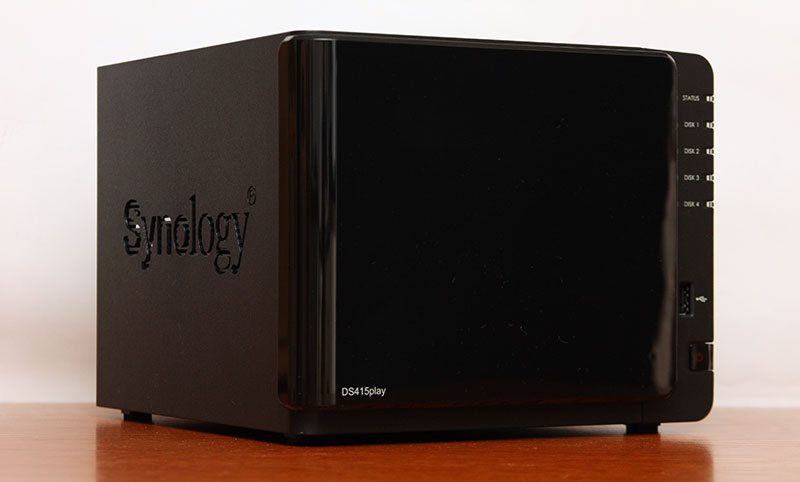
Above each of the drive bays, each of which use a push lever lock, are a series of white dots indicating the respective bay number.
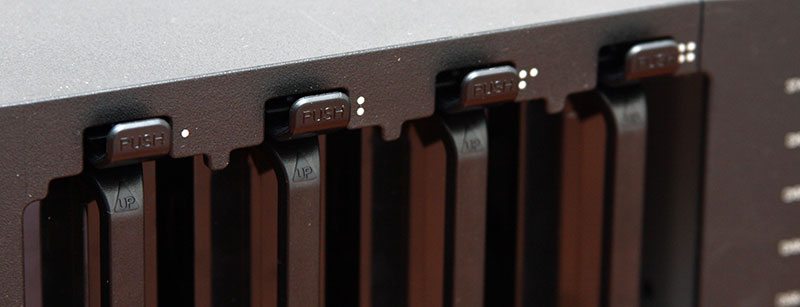
Similar to the design of the chassis, the drive trays are also identical to those found on the 215Play. Built entirely out of plastic, each tray has tool-free rails along each side to hold 3.5″ drives in place whilst a set of holes in the lattice framework are provided for installation of 2.5″ drives.
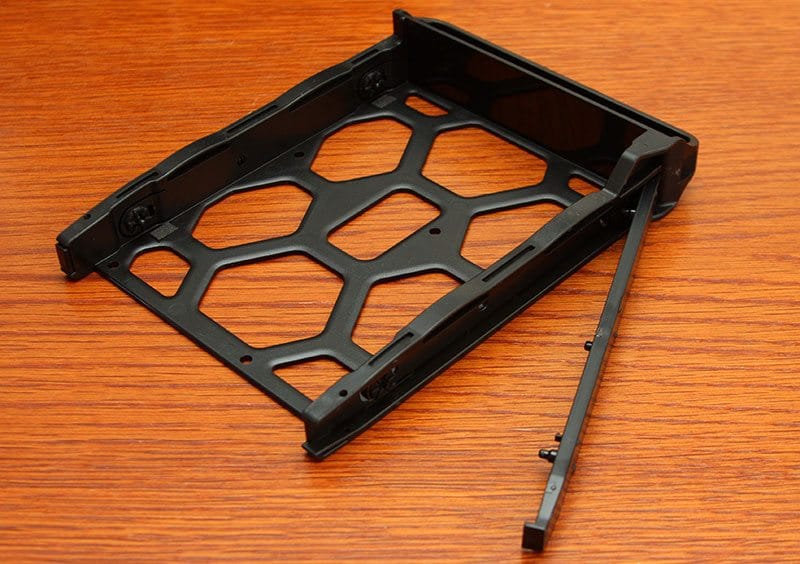
Moving round to the back-end of the system, two 92mm fans have to cooling taken care of whilst two USB2.0 and two USB3.0 ports along with a single Gigabit Ethernet port have the connectivity sorted. A proprietary five-way power terminal, reset button and a Kensington lock round off the rear I/O.
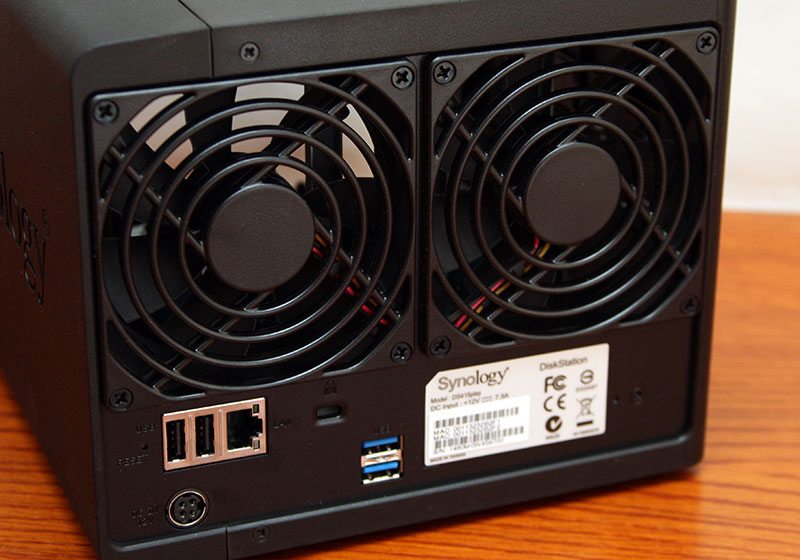
Removing the left hand side of the outer chassis allows us to take a look at what makes the 415Play tick. A large metal frame holding the drive bays dictates most of the systems dimensions and we can see how the open air built allows for as much airflow as possible to flow through the system to keep it cool.
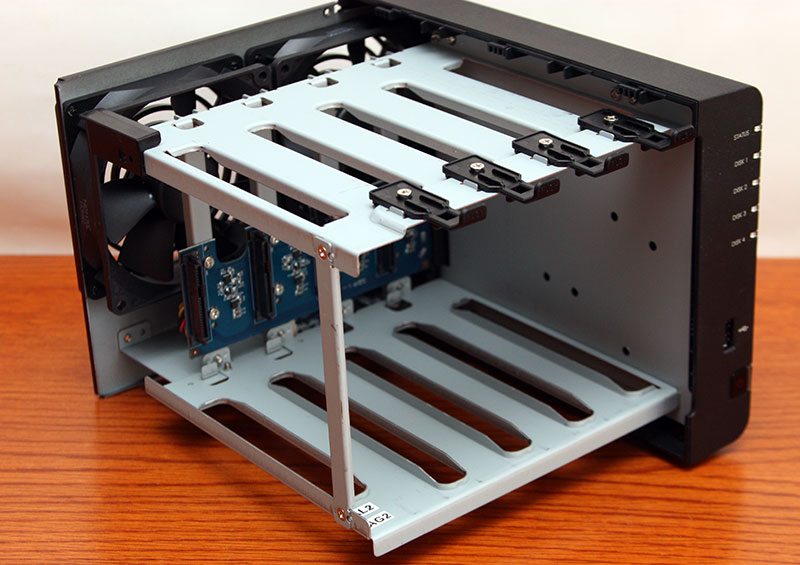
Where most systems that we look at typically have two PCBs making up the majority of the system, this unit has three boards with one daughter board hosting the SATA headers and the other hosting the two fan terminals and the USB3.0 controller and ports.
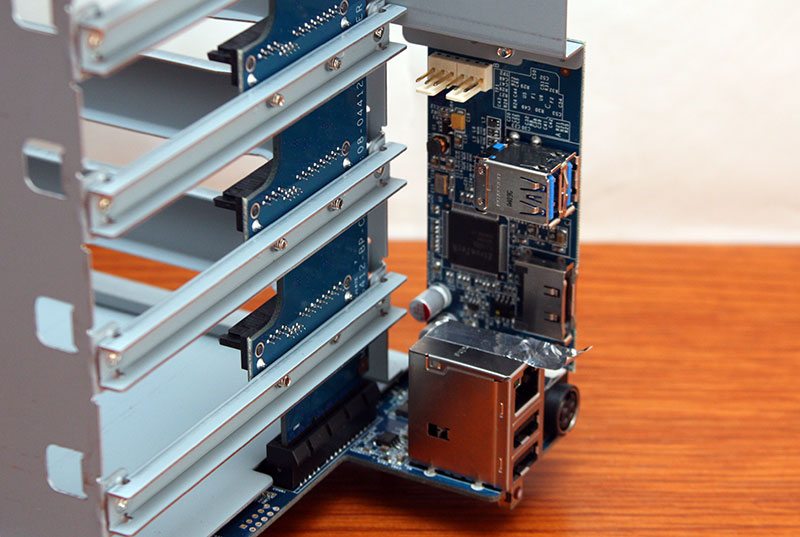
Interestingly when we look closer at the USB3.0 board we find the presence of an eSATA port that has been omitted from the systems specification. Additionally we note that the part number for this board indicates that it has been pulled from the DS412, an older system that Synology have in their product library. Whilst the presence of a redundant port may seem a bit back-to-front, using parts from other systems is far easier and more cost-effective over having two similar boards for each system – it’s just the way that things work.
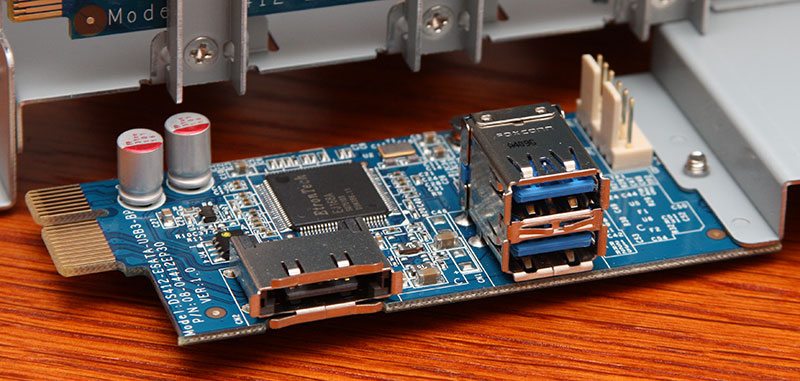
Setting the daughter-boards aside and looking at the motherboard in a little more detail, the vast majority of the components are mounted on the outer side if the board (when mounted into the chassis) with the only heatsink needed being positioned on the CPU.
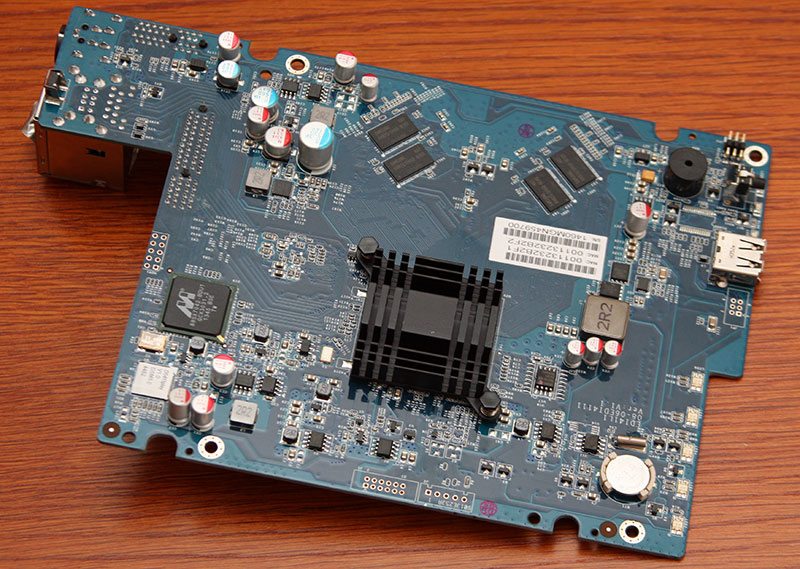
The processor is what the DS415Play [and the DS214Play] is all about. Built with media transcoding in mind, the 1.6GHz dual core CE5335 Atom processor from Intel (or Evansport as it is more commonly known) features Floating-point units which have the ability to transcode media on the fly into a number of formats for streaming to mobile devices. The transcoding ability is what has made the DS214Play such a hit in the market place and this is obviously why the DS415Play has appeared.
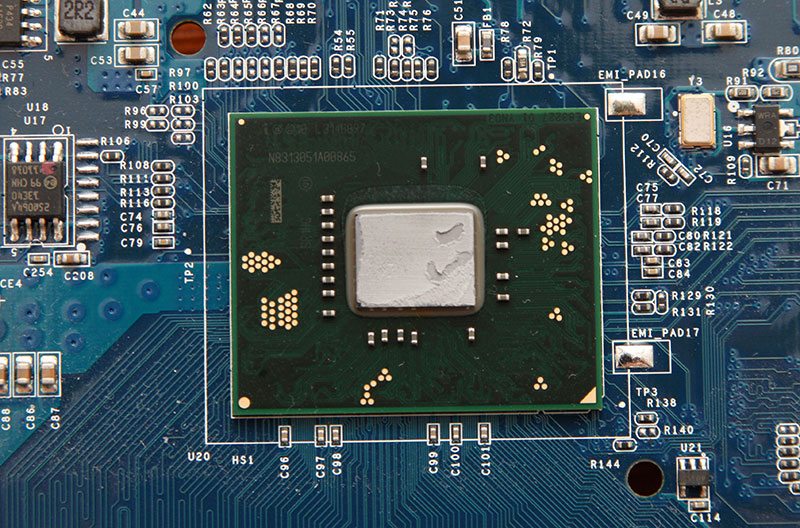
Paired up with the Evansport CPU is 1GB of DDR3 RAM, spread out across four SKhyinx K4B2G1646Q-BCKO packages to maximise the bandwidth to and from the processor.
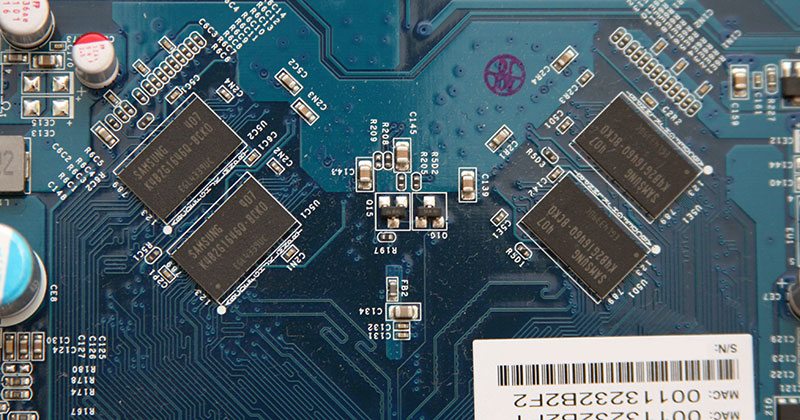
RAID and SATA control is handled by a Marvell 88SX7042 four-port PCIe SATA controller which has no support for eSATA devices. This therefore answers why the eSATA port that is present on the secondary board above is left redundant and is omitted from the specification.
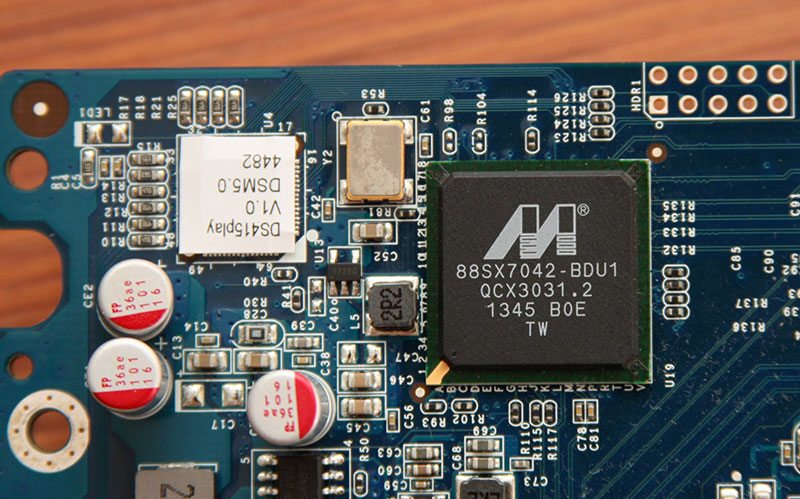
Along the front edge of the motherboard we find one of the three USB2.0 ports along with the power button and system speaker positioned just behind.
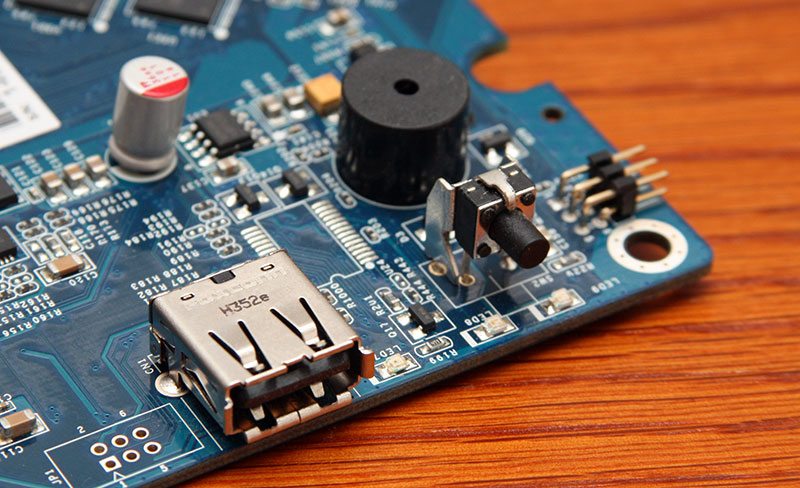
The motherboard itself doesn’t host many I/O ports with the LAN and USB2.0 ports left alone beside the power jack. Behind these we find the PCIe X1 and X4 lanes for the SATA and USB daughter boards.
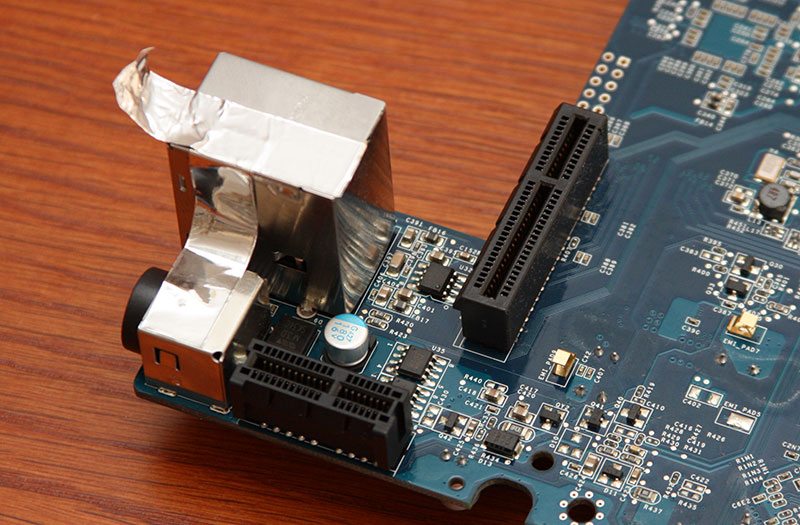
Last of all, a component that I failed to note in the DS214Play review is the LAN controller. I’ve noted a number of times that Realtek is not my first choice for a network controller when it comes to the SMB and enterprise markets, but in the SOHO market where the network performance is not quite as much of a focal point, Realtek are more than suitable for the job in hand.
